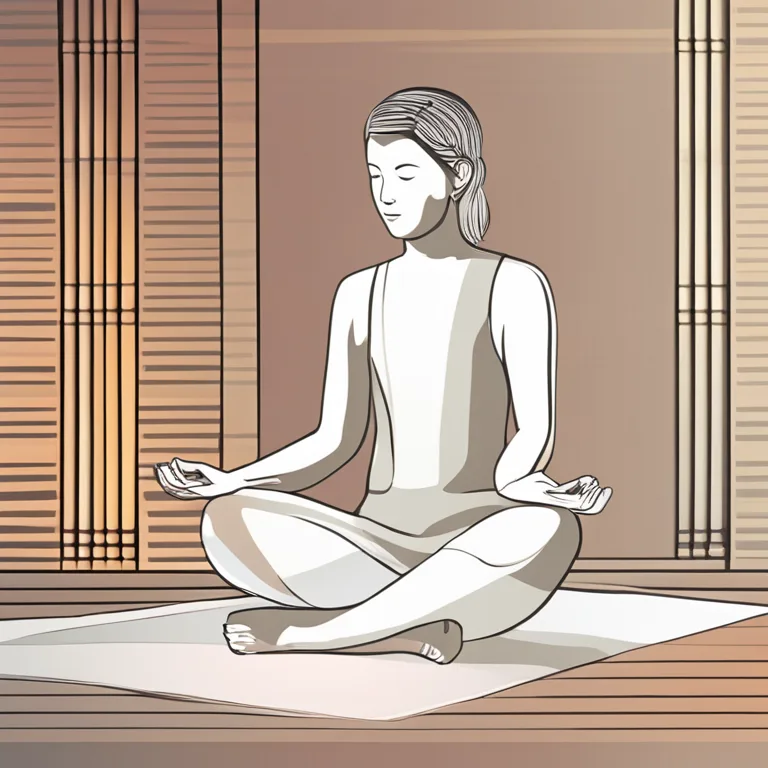
Meditation Techniques to Alleviate Pain
Discover meditation methods to soothe pain, improve mental clarity, and enhance overall well-being in this insightful article.
article by Hina Kurosawa
Introduction to Meditation for Pain Relief
Meditation has long been a bastion of tranquility for those seeking mental peace and emotional balance. In recent years, it has also emerged as a potent ally in the realm of pain management. Chronic pain, a pervasive issue that affects millions globally, often eludes the grasp of traditional medical interventions. The meditation practices discussed in this article offer an alternative approach to mitigating pain by harnessing the power of the mind. Empirical studies have shown that regular meditative practice can not only reduce the perception of pain but also improve one's quality of life by fostering a deeper sense of control and acceptance.

Mindfulness-Based Stress Reduction (MBSR)
One effective meditation technique for managing pain is Mindfulness-Based Stress Reduction (MBSR). Devised by Dr. Jon Kabat-Zinn in the late 1970s, MBSR combines mindfulness meditation, body awareness, and yoga to promote stress reduction. Practitioners learn to focus on the present moment, observing thoughts, feelings, and bodily sensations without judgment. This heightened awareness enables individuals to detach from their pain and potentially experience it in a less intense, more manageable way. Hospitals and clinics worldwide have implemented MBSR in their pain treatment programs, reflecting its growing acceptance in medical circles.

Visualization and Guided Imagery
Visualization and guided imagery meditation are powerful tools to divert the mind from pain. Through imaginative journeys, a person can transport themselves to calming and serene environments, effectively drawing attention away from discomfort. For example, one may visualize a soothing scene such as a babbling brook in a lush forest, focusing on sensory details—sight, sound, smell—to fully immerse in the experience. This mental escapism can help reduce the perceived intensity of pain, providing a mental refuge.

Body Scan Meditation
Body Scan meditation is an exercise in which attention is sequentially directed to different parts of the body. From the tips of one's toes to the top of the head, this methodical approach encourages practitioners to notice and release tension. For those experiencing pain, a body scan can aid in recognizing areas of discomfort and then using the breath to bring relaxation to those areas, sometimes alleviating pain through relaxation. With advances in biofeedback technology by 2024 and beyond, individuals are also able to use real-time physiological data to enhance their body scan practice, making it an even more effective technique for pain management.

Transcendental Meditation
Transcendental Meditation (TM) is another mindfulness practice embraced for its therapeutic benefits, including pain reduction. TM involves silently chanting a mantra to settle the mind into a state of profound rest and relaxation. Regular practice is said to lead to decreased anxiety, lower stress levels, and reduced pain because it can help shift the body's response from one of stress and tension to one of peace and restfulness. As stress often exacerbates pain, the calming effect of TM can therefore serve to mitigate pain's effects on the body.
Deep Breathing Exercises
Deep breathing is a central component of many meditative practices. By controlling the breath, individuals can actively engage the body's relaxation response. Diaphragmatic breathing, in particular, requires deep, even breaths from the belly, which can help alleviate tension and pain. When the body enters a relaxed state, endorphin levels – the body's natural painkillers – increase, potentially reducing the sensation of pain.
Published: 1/8/2024
Modified: 1/8/2024
More predictions
Come back here soon to learn more about yourself and your future


Meditation Techniques: A Handbook
Discover the breadth of meditation methods to enhance your wellness journey.


Meditation: Finger Techniques Explored
Discover the art of finger meditation to harmonize body, mind, and spirit through ancient practices for modern wellness.


Meditation Techniques to Soothe OCD
Discover meditation practices designed to help manage OCD symptoms through mindful awareness and relaxation.